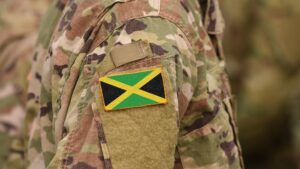Inflation slows for sixth-straight month
INVESTORS are anticipating that the monetary policy committee (MPC) will keep interest rates at its current level after its two-day meeting, which starts today and ends August 19, but that stance may change come September with the latest inflation data showing price increases continue to settle within the preferred range of the Bank of Jamaica (BOJ).
Consumer prices in July rose 5.1 per cent, according to data released Thursday by the Statistical Institute of Jamaica. The outturn is in the range targeted by the BOJ for a fifth-straight month though it has been declining for six months. July’s outturn not only matches the 5.1 per cent recorded for October last year but, together, both are the lowest inflation rate recorded in Jamaica since June 2021.
Statin said the rate was influenced by food and transportation costs going higher in the month. Items such as vegetables, tubers, plantains, cooking bananas and pulses all rise going up faster than the inflation rate at 7.4 per cent in July alone while higher petrol prices and the increase in the toll rates for the East-West leg of Highway 2000 also contributed.
Yet, despite inflation seemingly coming under control, hardly anyone is betting that the MPC meeting which ends Monday will come with an announcement of a rate increase. A
BusinessWeek survey show only 25 per cent of investors think a rate cut could be announced Monday, but that number jumped to 62 per cent when asked what they anticipate the BOJ will do after its September MPC meetings.
“Central banks historically have been behind in terms of rate increases or rate reductions. I think the BOJ has been spot on frankly, better than its colleagues across the world. I’m hoping there’s something this year,” Chris Zacca, president and CEO of Sagicor Group, responded when asked his views on the direction of policy rates at his company’s investor briefing on Thursday.
Zacca said for now, Sagicor will continue to manage its assets and liabilities and to control costs, “because we do not have that crystal ball” that shows what the BOJ will do.
But the BOJ has been clear. It has pencilled in rate reductions this year, and in June, took the first steps to gradually reducing how much liquidity it absorbs from deposit-taking institutions to facilitate more credit to the productive sector to engineer a soft landing for the economy which has been slowing under the weight of higher interest rates.
Already, banks are reporting softening in demand for auto loans and mortgages and the central bank reports that past due loans are increasing, though it is not at a level at the moment that causes worry.
Still, the central bank may not be quick to start cutting rates. In late July, Richard Byles, governor of the BOJ, told a parliamentary committee the bank is still expecting the inflation trend to be “interrupted temporarily” by rising agricultural prices from the impact of Hurricane Beryl, which hit the island on July 3.
“The impact of Beryl is going to see agricultural prices rise, but there may be second-round effects, meaning that agricultural prices rise, maybe wages want to rise too, maybe processed foods want to rise, maybe restaurants, and so forth, also rise, so there are second-round effects that go beyond just the primary impact of Beryl on agricultural prices. And so the MPC is going to look very carefully to see whether those secondary effects are so profound as to have an impact on the direction that we see monetary policy going in.
“Depending on how profound the impact is from Beryl, we will make a decision as to whether we need to maintain a tight position to stop secondary-round inflation perculating through the economy,” he said.











